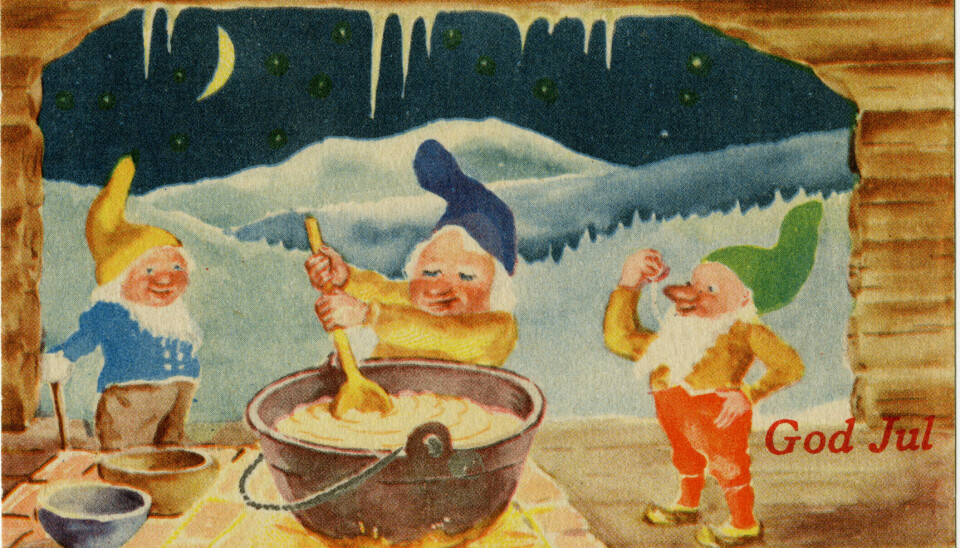
How Norwegians expressed resistance against Nazi occupation using Christmas cards
After red Santa hats were banned in Norway during World War II, many creative Christmas cards appeared.
On December 18, 1941, it was forbidden to use the Norwegian flag and its colours in a way that offended national sentiment. The ban was issued by Vidkun Quisling's fascist party, National Gathering.
Using the flag in that manner was considered a demonstration against the German occupation.
This was followed by a series of Christmas cards that could hardly be misunderstood.
Santa hat meant resistance
The text God norsk jul (Good Norwegian Christmas) adorned the cards, and they were filled with Norwegian symbols. Flags, ski jumping, rose-painting, and notably: Christmas gnomes with red hats.
“It’s perhaps not so surprising that they were confiscated,” Anja Hysvær Langgåt says.
She is a conservator at the Norwegian Museum of Cultural History, which has many Christmas cards from World War II.
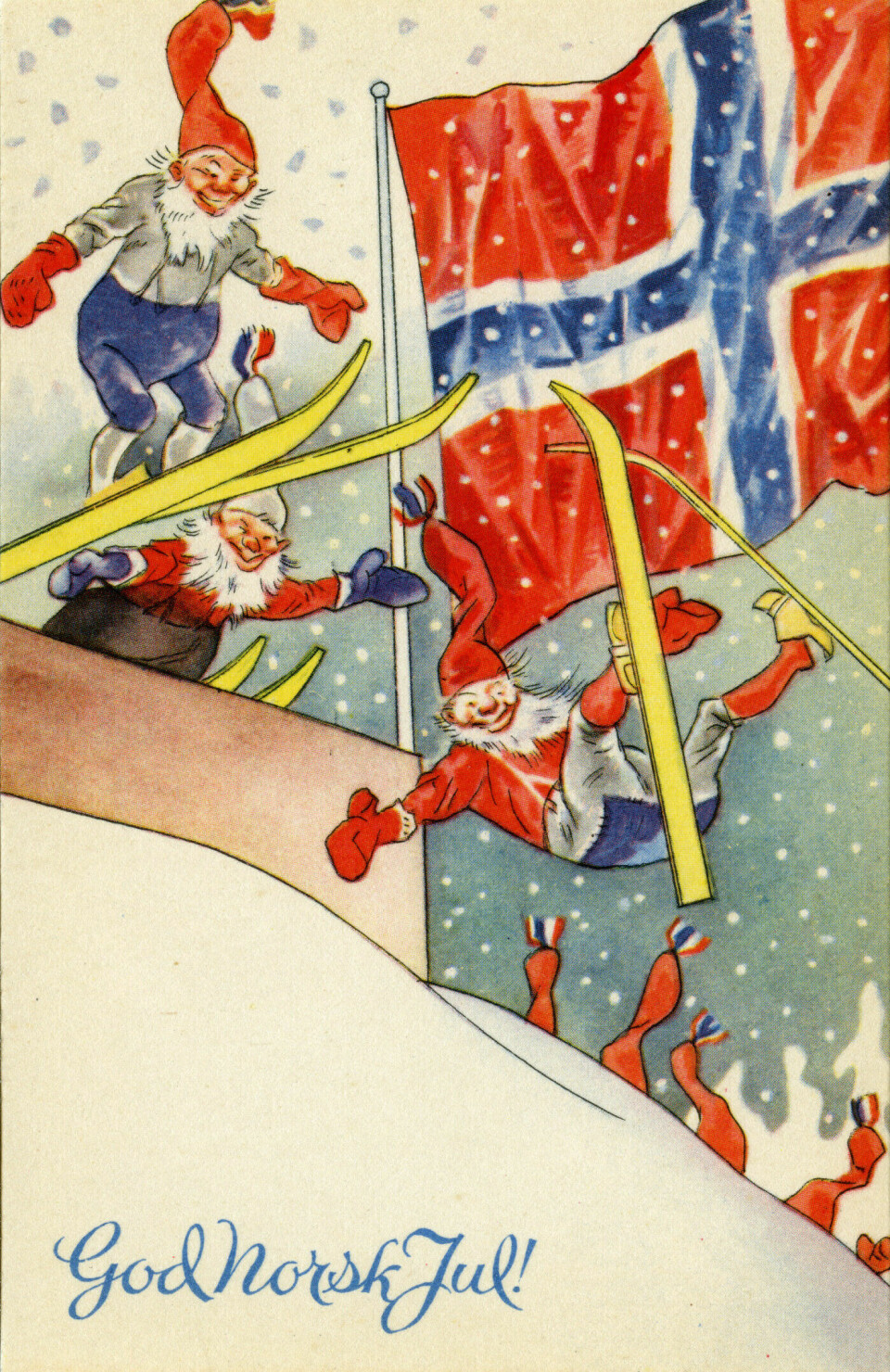
Four girls with red hats
Wearing red hats was a way to show resistance during the World War II, similar to the practice of attaching paperclips to lapels.
National Gathering and the police therefore cracked down on its use around Norway.
Local newspaper Porsgrunn's Dagblad wrote on April 2, 1942, that the police took action against 'four girls' who were wearing red and blue hats.
But despite the ban, several creative Christmas cards appeared.
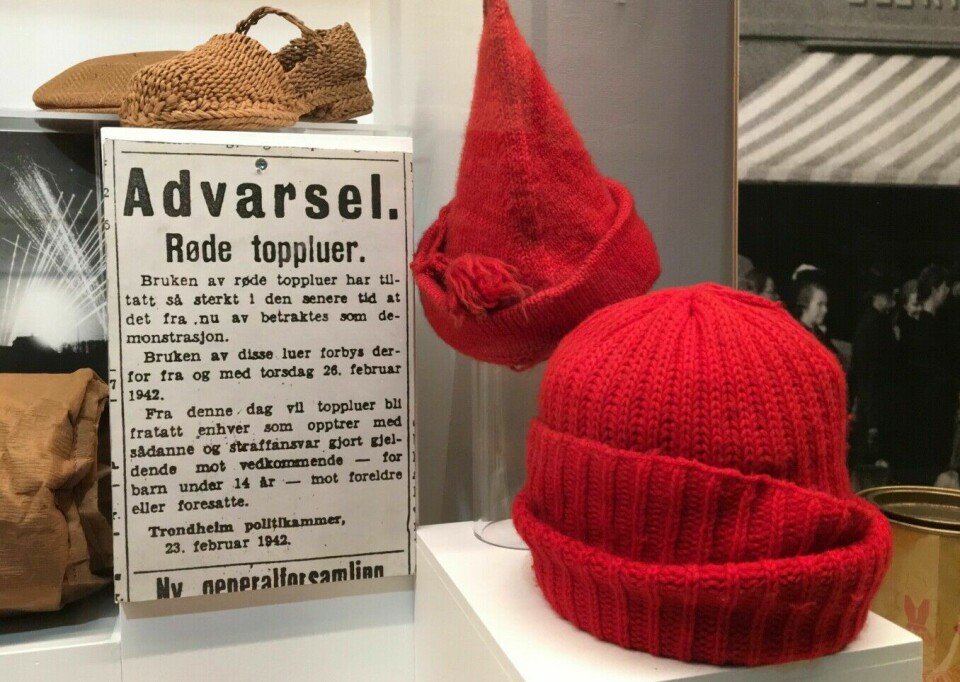
A huge protest
Sigrid Torjusson, who lived during the World War II and works as a volunteer at the Norwegian Museum of Cultural History, knows these Christmas cards better than most.
Her favourite is the Chistmas gnomes with yellow, blue, and green hats.
“I think it’s a very strong symbol. It's really a huge protest,” Torjusson tells sciencenorway.no.
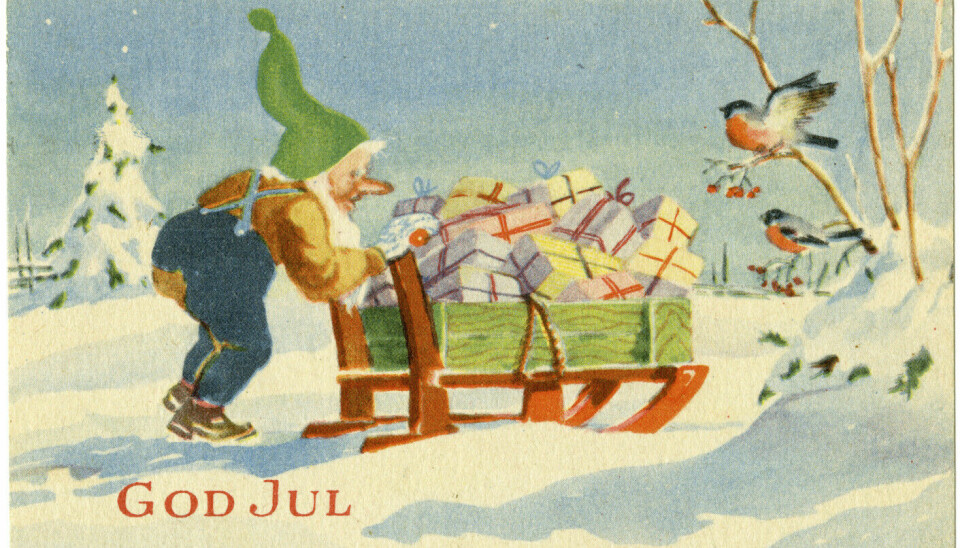
Many creative solutions
Many different solutions appeared on Christmas cards after the ban on red hats.
“Some chose to make Santa hats in other colours, while others chose to challenge and defy the ban by including red hats,” Langgåt says.
One of those who defied the ban was the illustrator Vigdis Rojahn.
“It’s perhaps my favourite. There the German crow and snatches the red hat from the Christmas gnome,” the conservator says.
Not only were these cards banned, but Rojahn had to be interrogated.
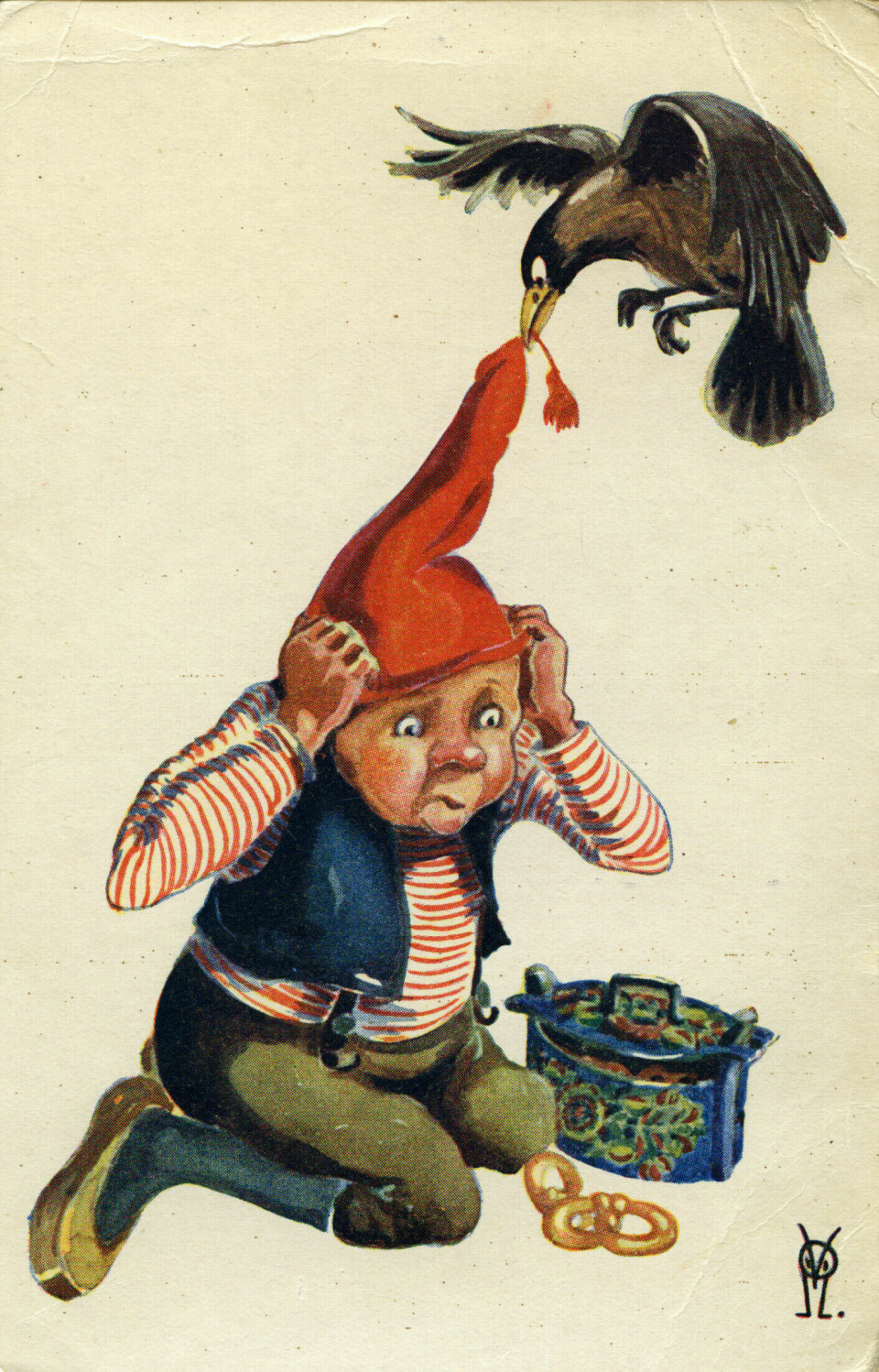
Thorbjørn Egner's bareheaded Santa
“And then there are the more ingenious solutions where they comment on the ban in other ways,” says Langgåt.
The Christmas gnomes could, for example, wear a sixpence or be missing a hat, as on one of Thorbjørn Egner's Christmas cards from 1942.
Here stands a bareheaded Santa scratching his head.
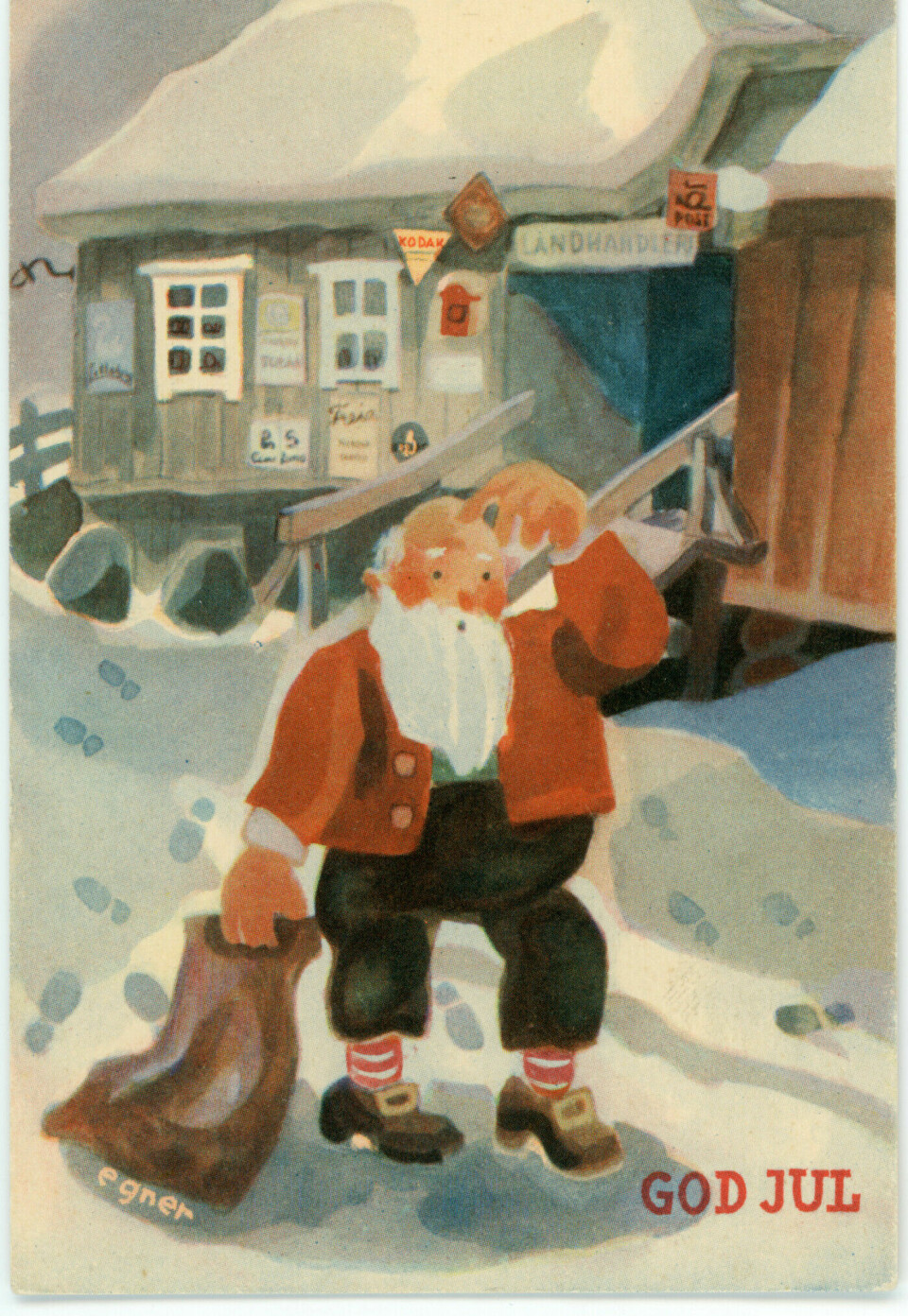
Roots back to the French Revolution
The red Santa hat was already popular in Norway before the World War II, according to Ingun Grimstad Klepp. The textile researcher at OsloMet is one of the authors behind the book Norsk strikkehistorie (Norwegian knitting history).
People knitted the red hats themselves. The hats often had tassels.
“It is also a garment with long historical roots as a symbol of freedom and political unity,” Klepp writes to sciencenorway.no.
Most viewed
At the end of the 18th century, during the French Revolution, the red Santa hat became popular as a symbol of freedom throughout Europe.
And in Norway, the hat continued to be a protest against the union with Sweden and a symbol of Norwegian identity.
"We are healthy and doing well despite everything”
It was therefore quite bold both to make and send these Christmas cards, Torjusson points out.
But how common was it for Norwegians to send these protest cards to each other during the war?
Langgåt and Torjusson at the Norwegian Museum of Cultural History are unsure how many of the cards were actually sent.
In the museum's collection, several of the cards are blank on the back. Of those sent by mail, several are postmarked in 1945, after the end of the war.
But Torjusson has Christmas cards in her private collection that were sent during the war.
"Hope you are healthy and doing well. We are healthy and doing well despite everything," it says on the back of one of the cards.
———
Translated by Alette Bjordal Gjellesvik
Read the Norwegian version of this article on forskning.no
References:
Dahl, H.F. ‘Norsk krigsleksikon 1940-1945’ (Norwegian war encyclopedia 1940-1945), Cappelen, 1995. ISBN: 9788202141387
Torjusson, S. & Langgåt, A.H. Da nisselua ikke kunne være rød (When the Santa hat could not be red), Norwegian Museum of Cultural History.
Article about the Santa hat in the Great Norwegian Encyclopedia (link in Norwegian).

































